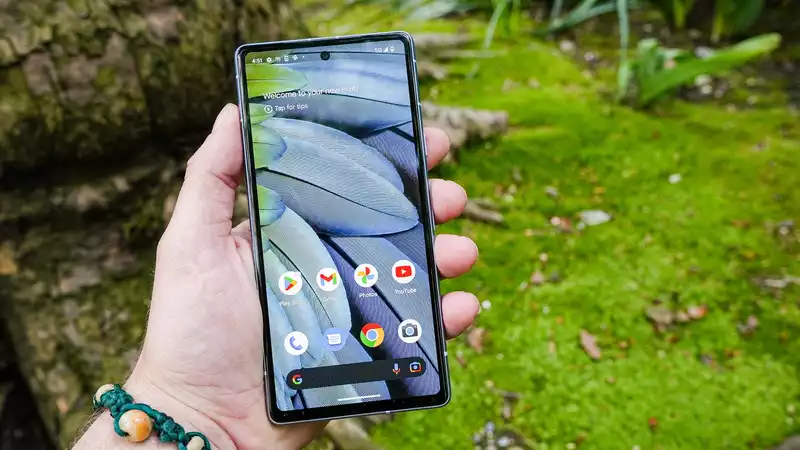The Google Pixel 7a is an amazingly affordable phone with features and hardware that would make some flagships jealous. But every time a mid-range phone gets a great camera, it has to sacrifice something else to keep the price down, and the Pixel 7a is no exception.
Unfortunately, there's one sacrifice I'm particularly disappointed in: the flaw the Pixel A series has suffered from since the Pixel 4a launched in 2020. That flaw is the fact that the phone's display is made of Gorilla Glass 3.
It is understandable that inexpensive phones have to make sacrifices: features like 120Hz adaptive refresh rates and glass and metal bodies are very nice, but their use also drives up the price. That's why it costs $400 more than the Pixel 7a.
However, some things should not be limited when considering cost savings. Display glass is one of them.
The display is arguably one of the most important parts of a smartphone. Any damage will limit the use of the phone to varying degrees. Scratches accumulate over time, and a well-placed crack can severely disrupt the touchscreen, making it impossible to use the phone.
Display glass has come a long way in the last few years, and in the process the materials have become stronger and tougher, with improved scratch protection, shatter resistance, and smudge-proof technology. It's all to ensure that your phone's view (and use) is as clear as possible.
I am not particularly careless with my smartphone, but I am a very clumsy person. I am not in the habit of dropping my phone, but I do drop it. Fortunately, the display glass has held up, and the worst damage I've sustained since 2016 was a small chip on the curved edge of my old OnePlus 7 Pro.
However, this (and other small, invisible scratches) is virtually impossible to avoid and is purely aesthetic; it's not like when the Xperia Z3's screen cracked, rendering the touchscreen completely inoperable.
Putting the phone in a case or using a screen protector goes a long way in keeping the phone in good condition. However, it is still up to the companies themselves to ensure the durability of their devices. By doing so, people can keep their phones longer or trade them in when it's time to upgrade. They don't have to worry about repairs, which can be expensive.
Currently, we are using the 8th generation of Gorilla Glass, otherwise known as Victus 2, which means Gorilla Glass display glass has evolved five times since Gorilla Glass 3 was released in 2013.
I am not saying that a mid-range phone like the Pixel 7a should have the latest and greatest display glass. That would be ridiculous. Because some things have to be sacrificed in order to keep a phone cheap. But Gorilla Glass 3. Google can do better.
Many of Google's rivals in the mid-range market, including some of the best budget phones, still offer Gorilla Glass 3, but it's time for Google to raise the bar for low-cost displays. Not only because of the improved protection, but also because Gorilla Glass 3 has been the default for the A series for four years in a row.
It doesn't have to be this way. Take, for example, the Samsung Galaxy A54. this mid-range Samsung is arguably the Pixel 7a's biggest rival and offers so much more for its $449 price tag. not as much as the Galaxy S23, but still ranked in our best camera phones list. in our best camera phones list.
The Galaxy A54's display also features Gorilla Glass 5, which was first released in 2016. In fact, so did the Galaxy A53 and A52. The last Samsung A series with Gorilla Glass 3 was the Galaxy A51 in 2019.
We don't think the Galaxy A54 is a better phone because of the display glass. But it does show that mid-range handsets can be wonderfully inexpensive without resorting to using decade-old materials to keep costs down. It's about time Google did the same.
The use of Gorilla Glass 3 does not change the fact that Google has created another great mid-range phone. The camera, 90Hz display, AI capabilities with Tensor G2, and access to standard Pixel updates make for a great device. If all those things are attractive, the fact that Google is using older display glass probably won't be an issue.
But for all the good Google has done with the Pixel 7a, it is still a serious shame that it stuck with glass that is another decade old. Screens are important, but they are very fragile and need all the protection possible. Sticking with something as old as Gorilla Glass 3, even though there are newer and better options, doesn't really cut it.
.









Comments